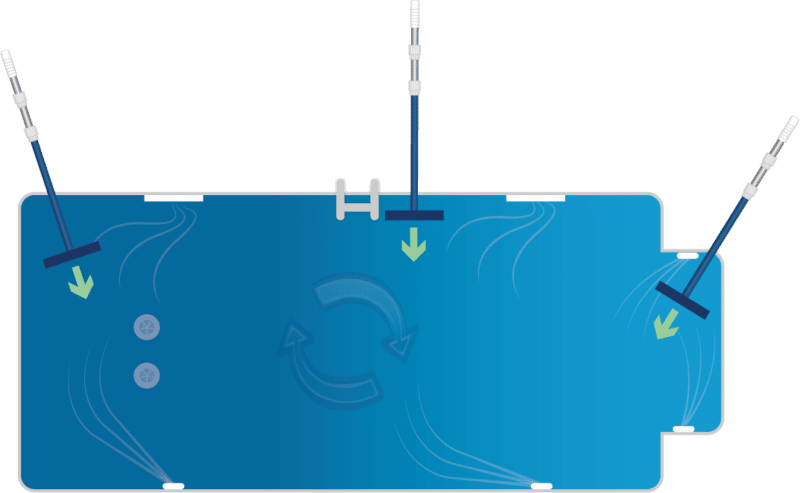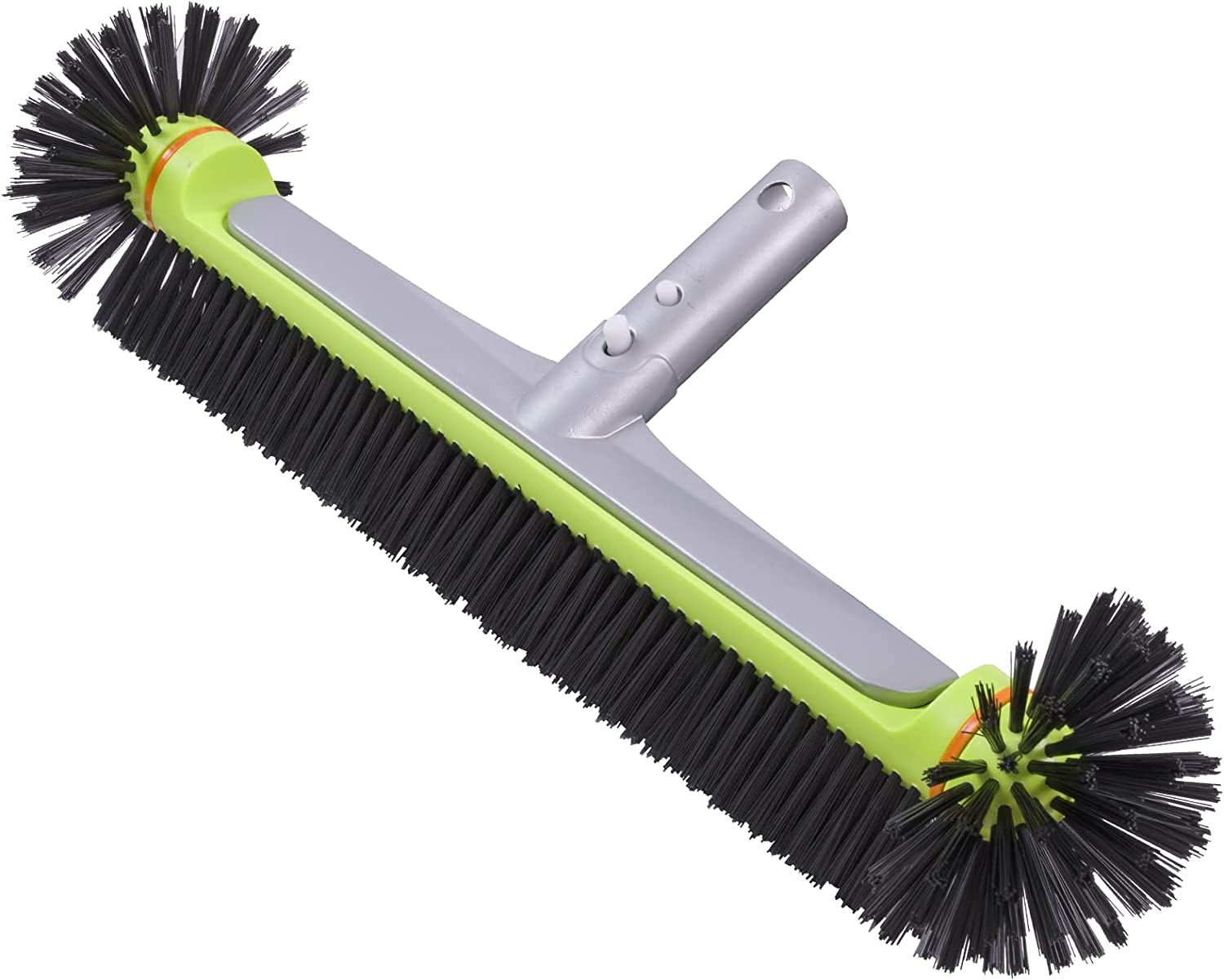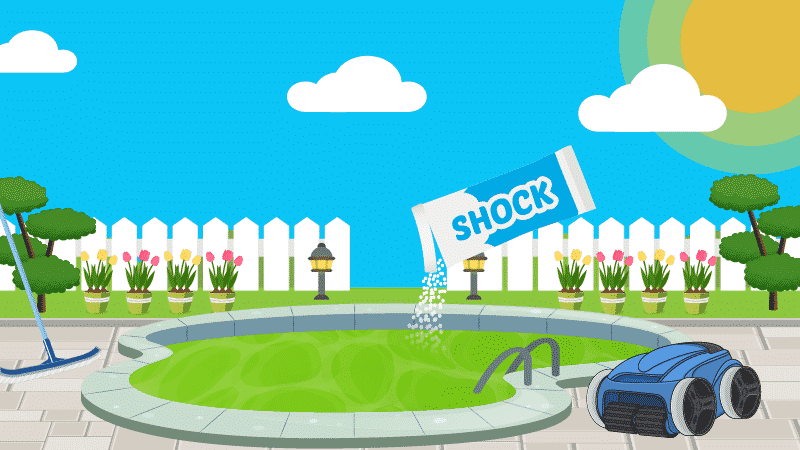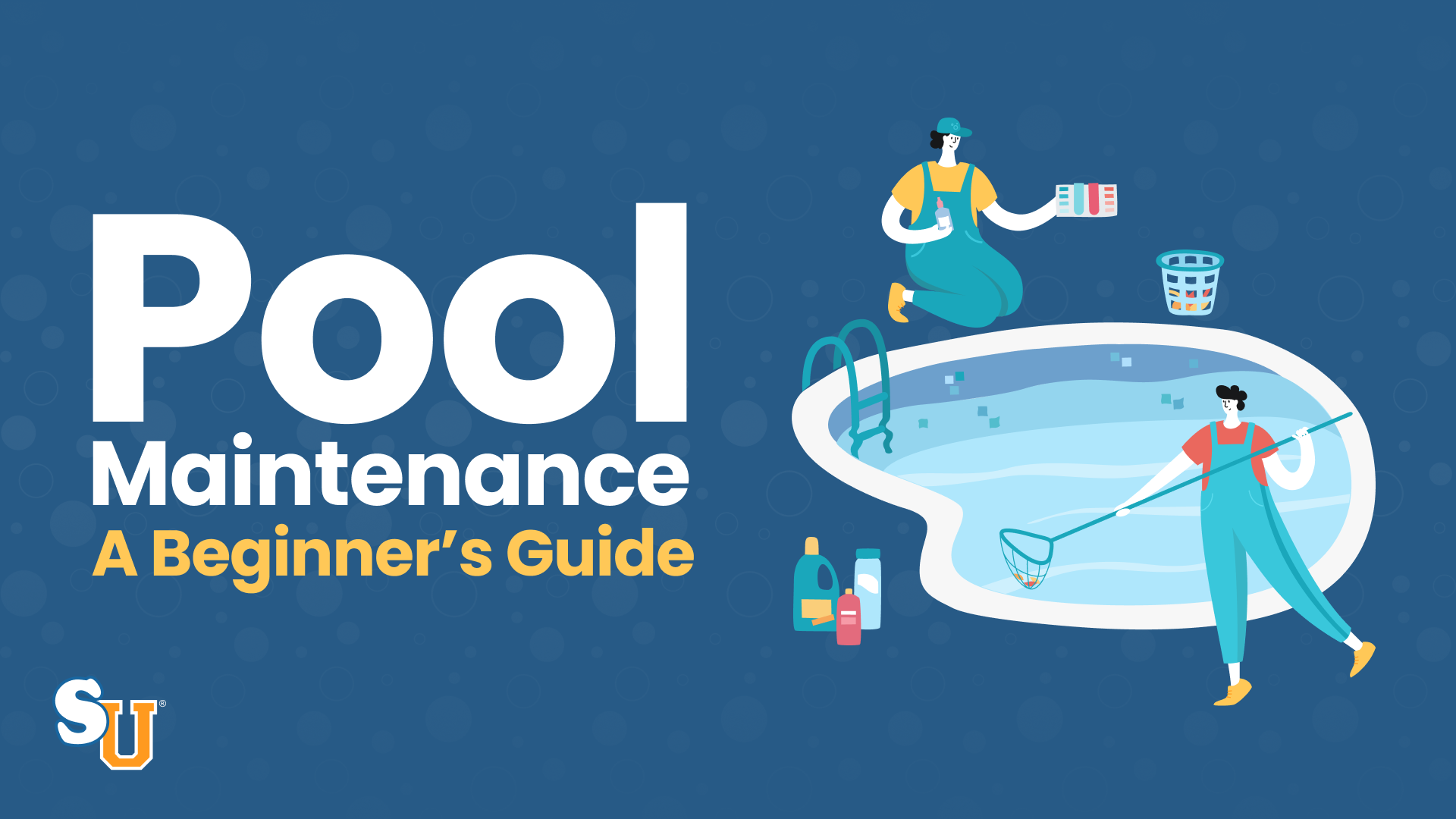The Best Pool Brush for Removing Hidden Algae
There are two types of pool brushes: stainless steel and nylon bristle brushes. And the best one for you depends on the type of pool you own:
- Stainless steel brushes, also known as algae brushes, are best for unpainted concrete or gunite pools. Algae spores cling inside the crevices of porous surfaces like concrete, so a heavy-duty brush works better than a softer one.
- Nylon bristle brushes are best for vinyl liners, fiberglass, and painted concrete pools. These brushes will help remove algae without damaging your pool floor or walls.
The wide pool brush with 360-degree reach helps clean hard-to-reach surfaces and tough crevices. Perfect for any type of pool, including vinyl liners, fiberglass, and painted concrete.
This brush helps remove dirt, contaminants, bacteria, and algae from porous surfaces. For unpainted concrete or gunite pools only.
In addition to a brush, you’ll want to own a telescopic pole. Attaching your brush head to an extendable aluminum pole will help you reach every inch of your pool walls, floor, and steps where algae may be clinging to.
Keep reading for a quick guide on the right way to brush and clean your pool surfaces.
How Often Should You Brush Your Pool?
Brush your pool once a week to remove algae spores, dirt, and bacteria from your pool surfaces. This helps your sanitizer and pool filter to kill or capture any contaminants that were clinging to your walls.
Once the contaminants or algae spores are floating in your pool water, your chlorine has a better chance of killing them. And by brushing regularly, any contaminants that were clinging to your pool floors or walls can pass through your filter system, where they can be captured.
Without weekly brushing, you’ll likely have pockets of contaminants that can fester into larger issues.
Stop wasting time and money with confusing water chemistry and maintenance. Our effortless system guarantees to keep your pool balanced, sanitized, and crystal clear all year. Works for all pools including saltwater.
Best Pool Brushes
There are two types of pool brushes: nylon bristles and stainless steel bristles. But as we mentioned, the type of brush you need depends on the type of pool your own.
For Unpainted Concrete Pools or Gunite Pools: Use a stainless steel bristle brush. Also known as an algae brush, this removes contaminants lodged inside porous surfaces. It’s usually the best choice for inground pool owners.
This brush helps remove dirt, contaminants, bacteria, and algae from porous surfaces. For unpainted concrete or gunite pools only.
For Fiberglass, Vinyl, or Painted Concrete Pools: Use a brush with nylon bristles only. Stainless steel will damage your pool surfaces, so a softer nylon brush is needed. This is usually best for above ground pool owners. Just be sure to buy a brush with an aluminum back, since other materials will corrode in pool water over time.
The wide pool brush with 360-degree reach helps clean hard-to-reach surfaces and tough crevices. Perfect for any type of pool, including vinyl liners, fiberglass, and painted concrete.
Like any pool supply, you get what you pay for. So purchase a quality scrub brush since cheaper brushes (like Intex brand) tend to break. And be sure you own a telescopic pole with a sturdy, aluminum handle that fits your brush head.
Get those hard to reach places with your leaf net, vacuum, or brush. This professional-grade telescopic pole is what the pros use to clean pools thoroughly.
How to Brush Your Pool
Once a week, brush the walls, ladders, and corners of your pool. Be sure to get into every nook and cranny possible to brush away any lurking algae formations. And don’t forget to break up any potential buildup on your pool floor.
Brushing will push any algae spores into the water, making it easier for chlorine or other sanitizers to kill the spores. So get into any areas where contaminants might be accumulating or where there’s not a lot of flow or circulation. These are known as “Dead Zones” and are located away from return jets and skimmers. Be sure to check out our guide on Pool Circulation for more help identifying your pool’s dead zones.

Unfortunately, if your pool has already developed a serious algae problem, brushing isn’t going to solve the problem. You’ll need to shock and vacuum your pool after brushing. Be sure to check out our guide on How to Clear a Green Pool for step-by-step help.
Other Tools to Keep Your Pool Clean
In addition to a heavy-duty brush and telescopic pole, you’ll need a skimmer or leaf net and a manual vacuum head and vacuum hose. The right pool cleaner brush, pool skimmer, and pool vacuum are critical for proper pool maintenance For a quick tutorial on keeping your pool clean, check out our Pool Cleaning 101 guide.
You do not need a separate wall brush, corner brush, or floor brush. The best brush should cover a combo of your pool walls, corners, and floors. Look for an extra-wide swimming pool brush with slightly curved edges on the ends or a brush with bristles on the sides. Brushes without a soft bumper or curved edges will increase the chances of damaging a fiberglass or vinyl pool. And whatever brush head you buy, be sure the clip handle works with a standard telescopic pool pole.
4 Ways We Can Help With Your Pool
- Pool Care Cheat Sheets (Free): Easy-to-use downloadable guides to help you keep track of taking care of your pool this year.
- The Pool Care Handbook: An illustrated guide to DIY pool care, including water chemistry, maintenance, troubleshooting, and more.
- The Pool Care Video Course: You’ll get 30+ step-by-step videos and a downloadable guide with everything you need to know about pool maintenance.
- The Pool Care App: Enter your water test results. Get a custom treatment plan. Know exactly what chemicals to add to keep your pool clear.












